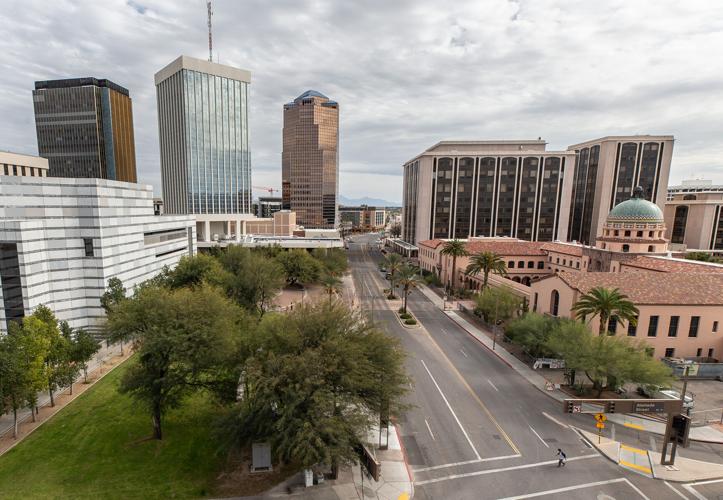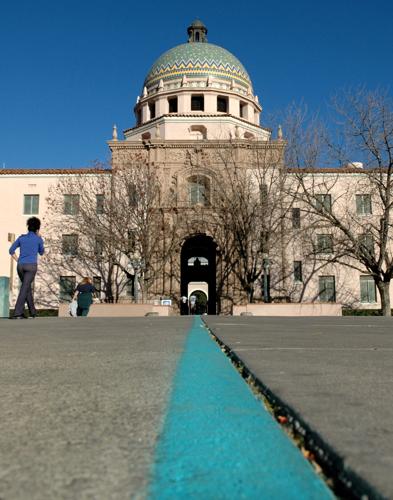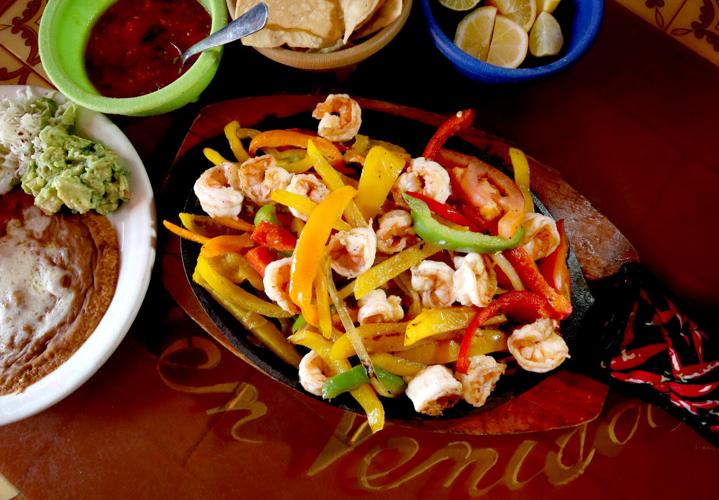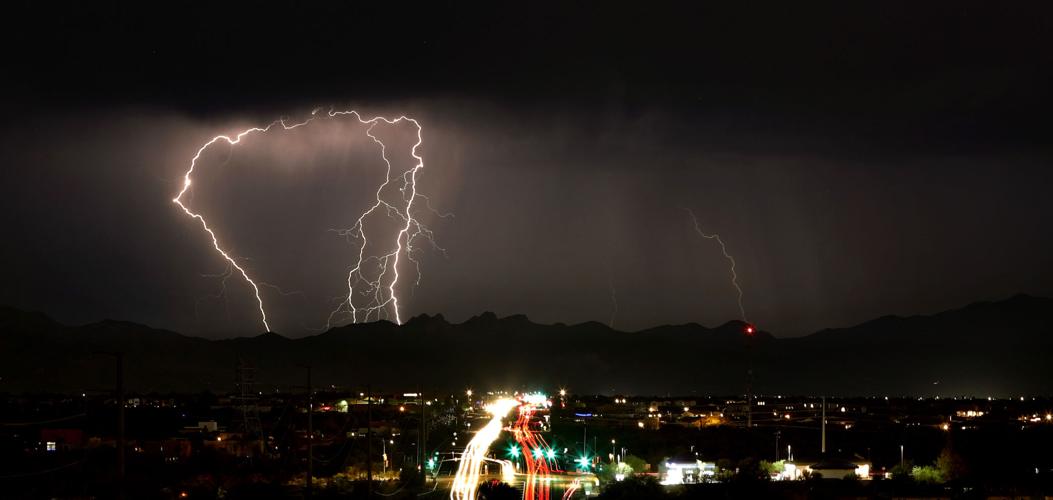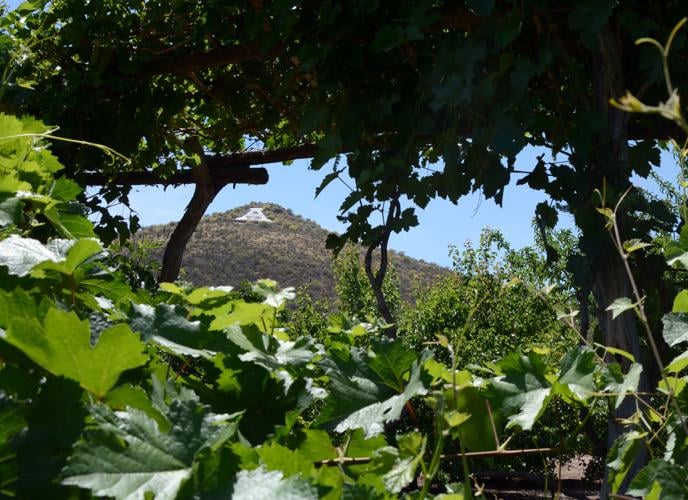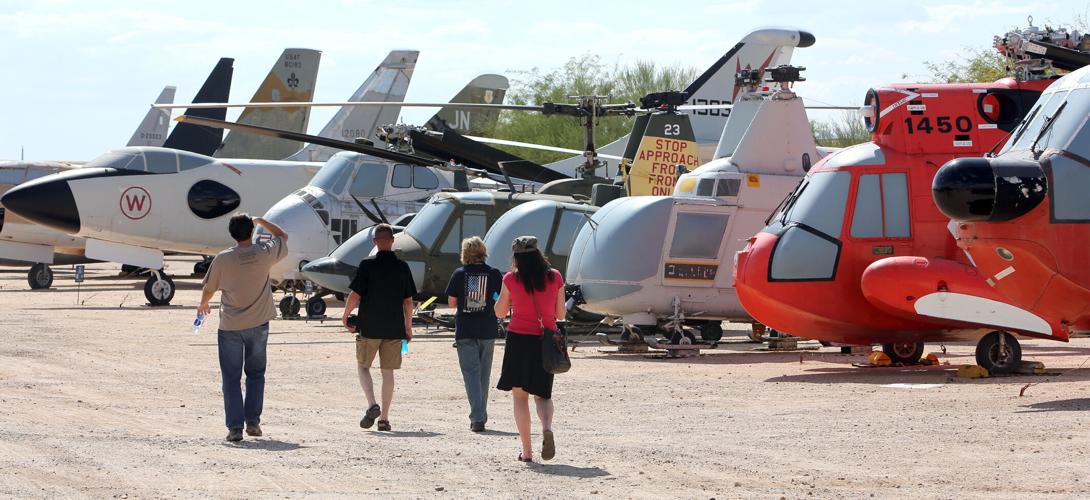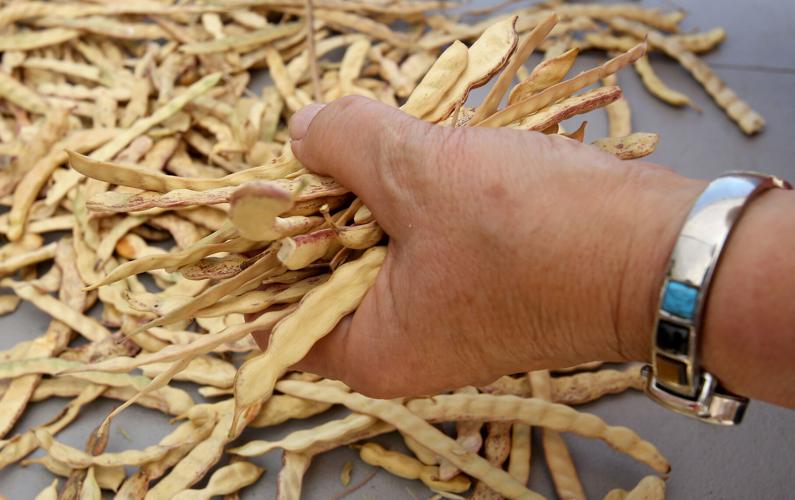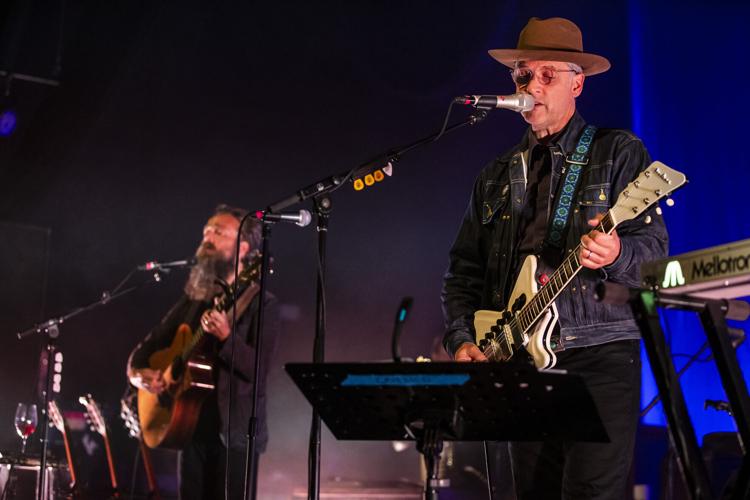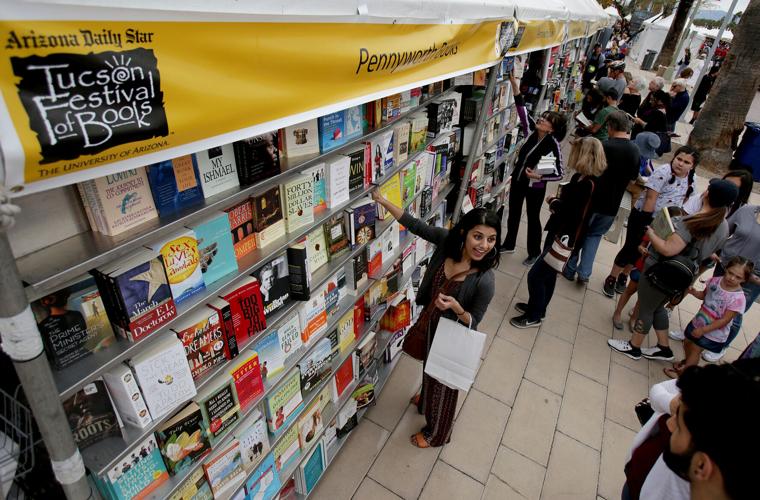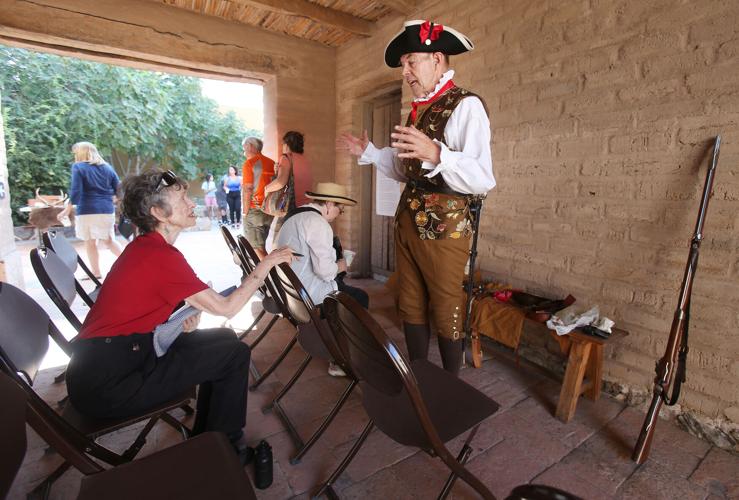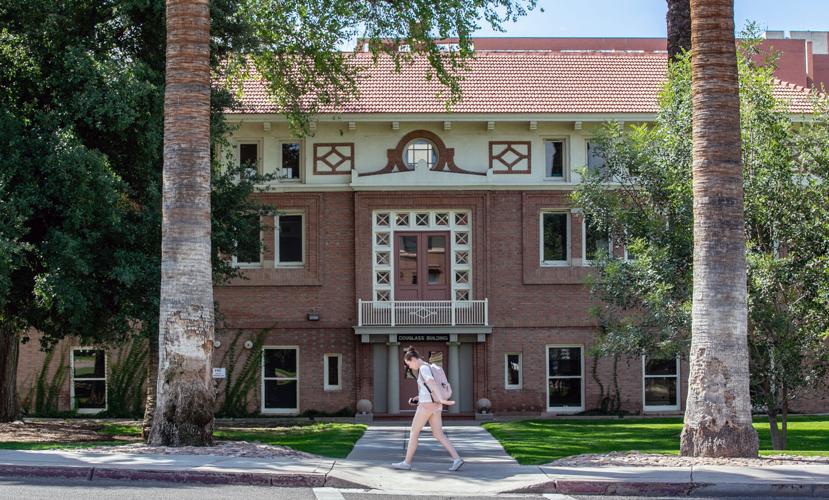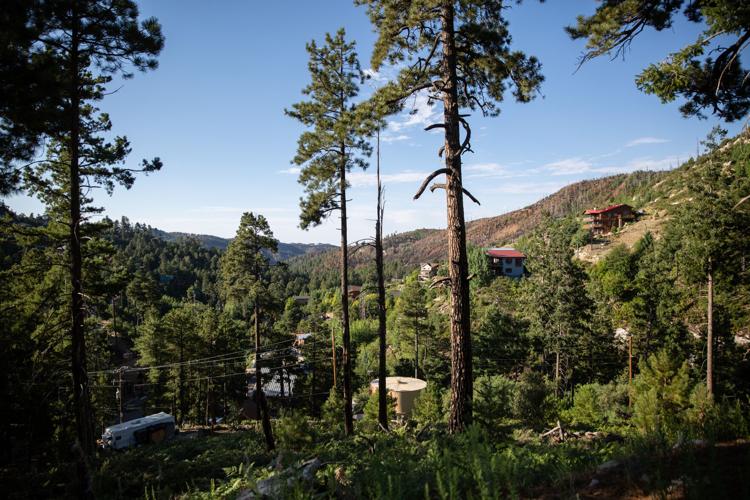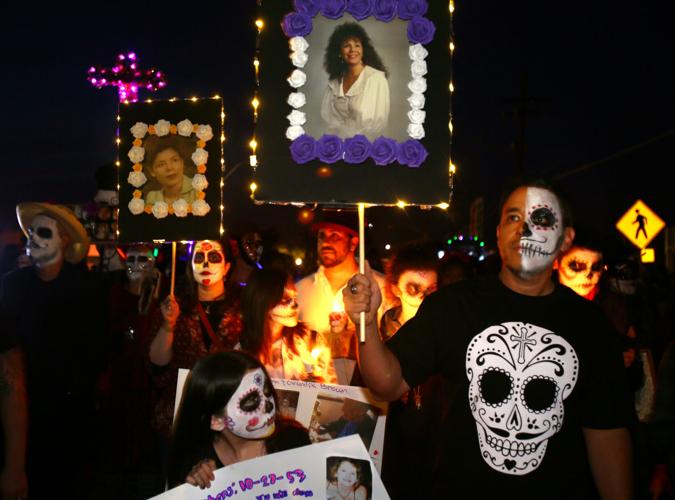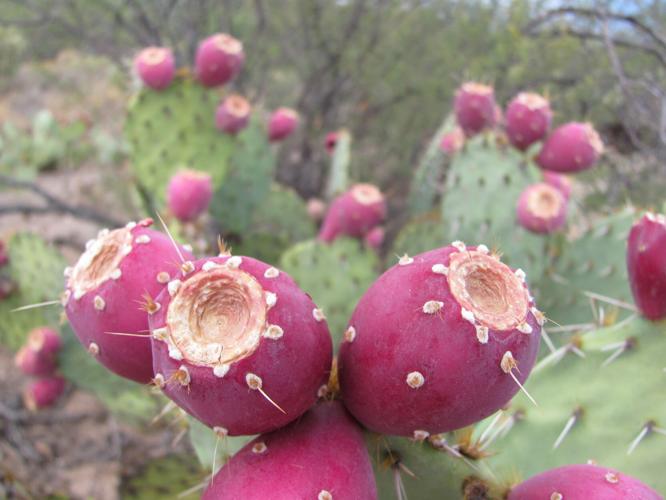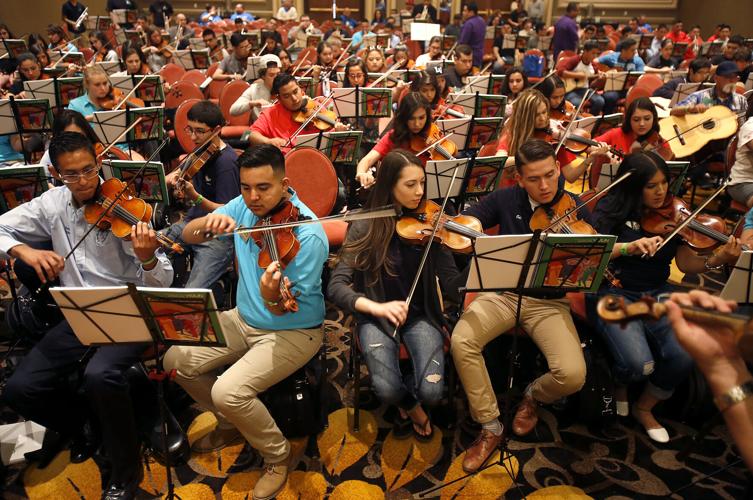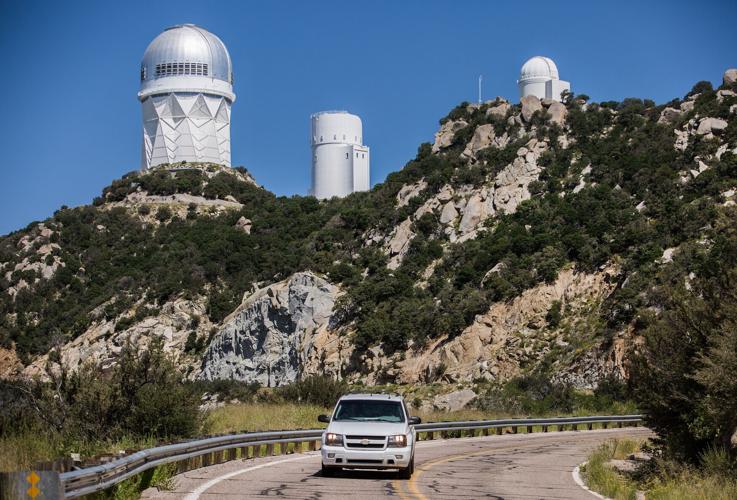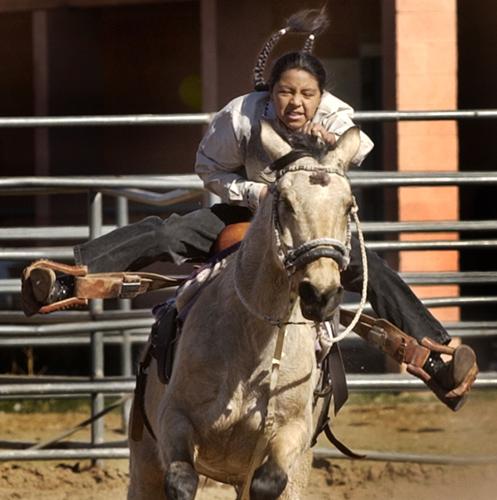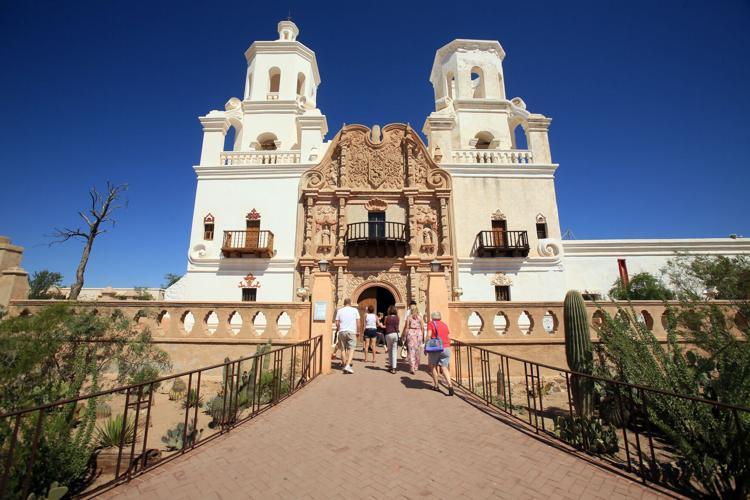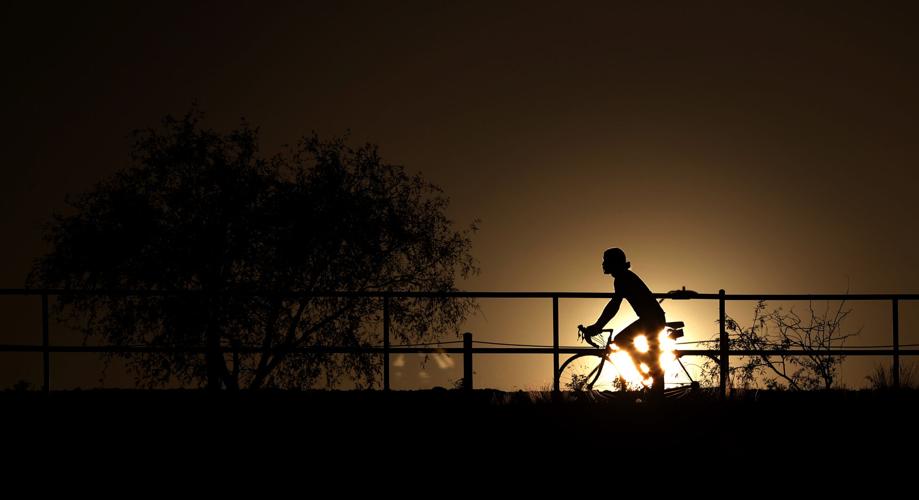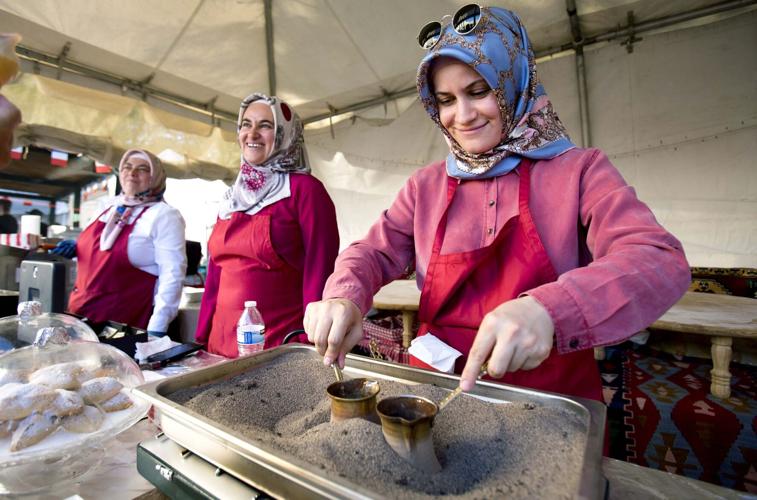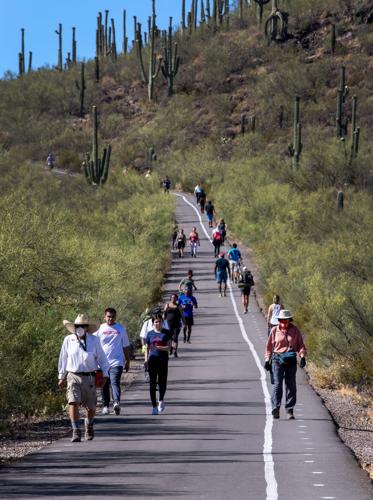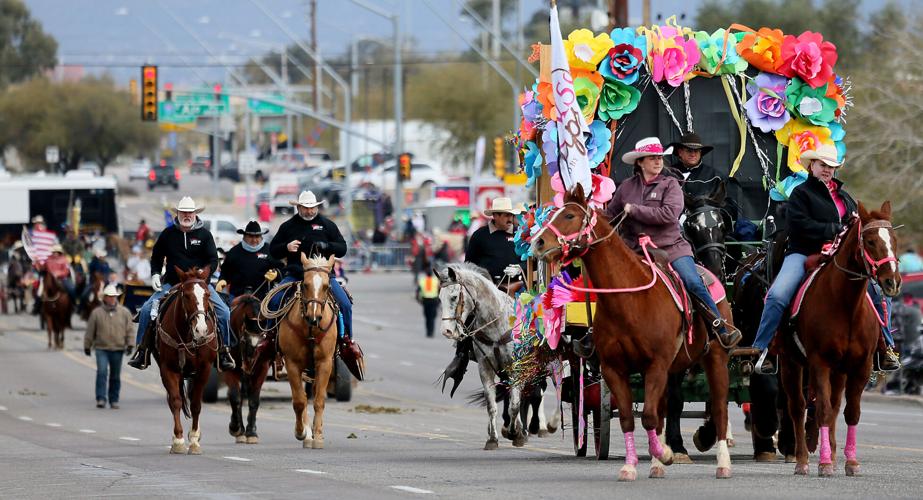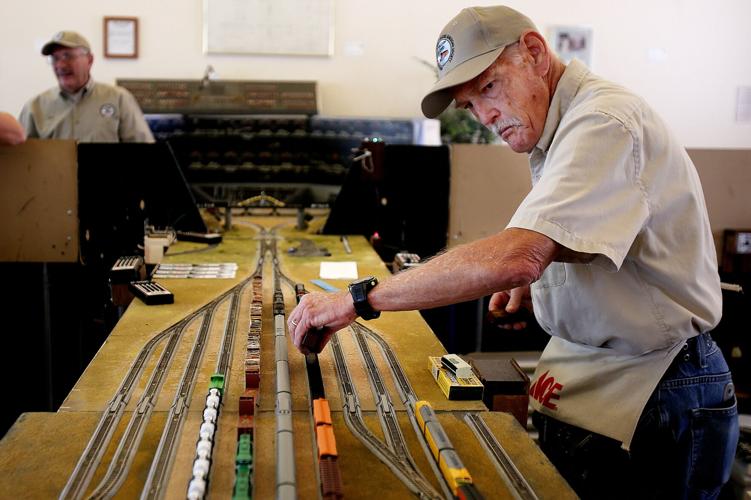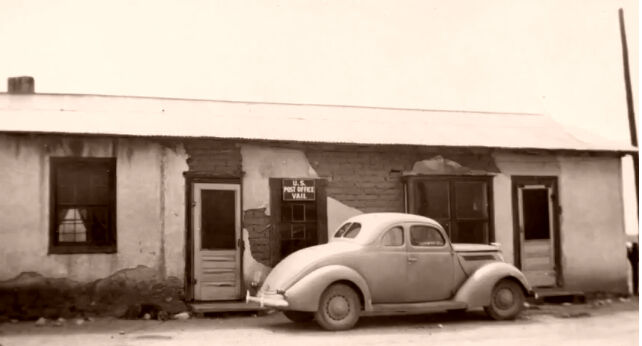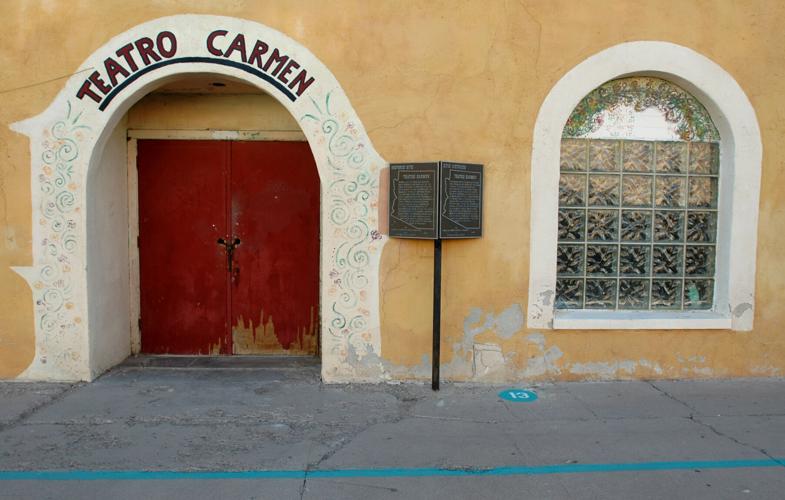COVID-19 has been canceling celebrations left and right — and Tucson’s 245th birthday is no exception. But that doesn’t mean you can’t celebrate the Old Pueblo.
The Tucson-Pima County Historical Commission’s Birthday Subcommittee and the Presidio Museum, which hosts the annual Aug. 20 bash, has come up with more than two dozen things that make our city great.
“The city of Tucson’s birthday event is very special to us,” said Amy Hartmann-Gordon, director of the Presidio Museum. “It is a celebration of the history of Tucson and Southern Arizona and a celebration of the beautiful things that happen in our community with its conglomeration of cultures, from gastronomy to heritage gardening to architecture, art and dance."

Shrimp fajitas with refried beans, guacamole, chips and salsa at Crossroads Restaurant in South Tucson.
Sonoran Gastronomy
From classic Mexican fare to our ubiquitous Sonoran hot dog, Tucson is a foodie’s paradise. We've got the Unesco City of Gastronomy designation to prove it — an honor bestowed on the Old Pueblo in 2015, when Tucson became the first City of Gastronomy designated in the United States for its innovative food cultures.
Our award-winning chefs tap into our abundant sustainable produce and indigenous ingredients, including tepary and mesquite beans, prickly pear, cholla buds and other precolonial wildlife that still grows in the desert.
See how Don Guerra of Barrio Bread incorporates heritage products like white Sonoran wheat into his artisan loaves. Carlotta Flores is putting locally grown produce from the University of Arizona's Community and School Garden Program on plates in her northwest side vegan-plus restaurant Charrovida Plant +. Or take a drive down South Fourth Avenue that straddles the cities of Tucson and South Tucson for a taste of Mexican food tradition that goes back to the mid-1900s and beyond including Mi Nidito, Guillermo's Double L and Micha's Restaurant.

Lightning strikes the Santa Rita Mountains as traffic flows on Houghton Road after a monsoon storm picked up steam after passing through Tucson's east side.
Monsoons
Though Tucson’s monsoon storms are playing coy this year, when they show up they bring cooler temps and the lovely smell of creosote. If you want to get Tucson a gift, wash your car — that’s bound to bring the rain our way.
While you wait, check out “The Desert Smells Like Rain” by Gary Nabhan and “Sing Down the Rain” by Judy Moreillon, both available through the Pima County Public Library. Today, the season has a start date of June 15, however, according to tradition, June 24 — Dia de San Juan — marks the start of the monsoon. The legend is that Spanish explorer Francisco Vásquez de Coronado prayed for rain on June 24, 1540, and his prayer was answered.
Through the 1940s, local children were instructed to bathe in the Santa Cruz River because the water was blessed on that day. But as the river dried up, the tradition faded. It was not until the 1990s that neighbors revived the tradition of the festival, and in 2019 the Santa Cruz River Heritage Project returned 2.8 million gallons of water to the riverbed.

Sentinel Peak, commonly known as "A" Mountain, stands watch over the Mission Garden, 929 W. Mission Lane. The garden hosts a number of crops dating back to before the first Spanish missionaries set foot on Tucson's soil.
Mission Garden
Connect with the Old Pueblo’s agricultural past with a trip to the Mission Garden. Located at the base of “A” Mountain, the Mission Garden is known as the Birthplace of Tucson because of its 4,000-plus year history of settlement and farming. It re-creates the walled garden that was part of the Spanish San Agustín Mission. The space features timeline gardens showing the city’s agricultural story, ending with Tomorrow’s Garden, which guides gardeners through future climate change and water scarcity. missiongarden.org

Yummy Eegee's are the perfect summer treat.
Cool treats
Cool down with one of these Tucson staples — a raspado or an Eegee. Eegee’s, founded by University of Arizona graduates Ed Irving and Bob Greenberg, is known for its frozen fruit drinks. According to the Presidio Museum, the sandwich shop sells over 1 million gallons of Eegee’s a year. Then there are raspados — icy treats, served with real fruit or nuts, with or without ice cream. Tucsonans can easily find raspado shops throughout the city. Among Tucson’s oldest raspado shops is Oasis Fruit Cones at 4126 S. 12th Ave., near East Ajo Way.

The Pima Air and Space Museum in Tucson houses some of the most significant aircraft in the history of flight.
Pima Air and Space Museum
The Pima Air and Space is home to more than 350 of the most significant aircraft in the history of flight. It’s beginnings go back to 1966, when Davis-Monthan Air Force officials recognized that historic World War II and 1950s-era aircraft stored on the base were rapidly disappearing into smelters. Base officials began to set aside examples of the many types of aircraft. Later, a foundation was established and the site for the future museum was created. pimaair.org

Mesquite beans were thoroughly inspected and checked for rocks, twigs, leaves and other debris at the 15th annual Mesquite Milling & Fiesta with Desert Harvesters at the Santa Cruz River Farmers' Market. The event was held in June 2017.
Mesquite
A favorite native tree and food source, mesquite beans can be harvested and ground for a tasty, nutritious flour mixed in with any baked good. Check out the local cookbook, “Eat Mesquite and More,” by Desert Harvesters for recipes and a bit of history. Take in a massive mesquite estimated to be about 300 years old at Agua Caliente Park, 12325 E. Roger Road. While you're there, take a walk along a paved path under a canopy of mesquite trees.

Joey Burns, vocalist and guitarist for Calexico, performed with the rest of the band along with Iron and Wine during a concert at the Rialto Theatre in August 2019.
The sounds of the Old Pueblo
Whether you’re a fan of folk duo Ryanhood or the desert rock band Calexico, Tucson is a cradle of music fusion generating Latin, funk, country, Waila and ranchera sounds. In the time of COVID-19, you may catch your favorite local act streaming a live show online. Just last month, the sounds of the city were showcased on a national platform when local singer Brian Lopez of XIXA fame, Sonoran-soul singer Mattea and psychedelic cumbia outfit Los Esplifs took to the virtual stage as part of the John F. Kennedy Center for the Performing Arts’ Arts Across America Program. Watch it back at tucne.ws/aaap.

Book enthusiasts browsed the racks at Pennyworth Books during the Tucson Festival of Books in March 2018. The annual festival is held at the University of Arizona.
Tucson Festival of Books
One of the largest book events in the country, the Tucson Festival of Books was ready for its 12th annual event when COVID-19 came into town. The festivities not only promote literacy but STEM teachings as well. Despite the cancelation, the book festival has been hosting virtual author talks at crowdcast.io/tfob. Upcoming talks include author, journalist and activist Shaun King, and Kevin Kwan, the author of “Crazy Rich Asians.”

Living History Day at the Presidio San Agustín del Tucson Museum, 196 N. Court Ave., in 2016. The event included demonstrations of late-1700s dress, games, food and artillery firings.
The Presidio Museum
Beyond serving as the site of Tucson’s official birthday party, the museum, located on the site of the original Spanish Presidio San Agustín del Tucson, houses an excavated archaic pit house and a renovated Territorial period Sonoran row house. It shares the multicultural story of Tucson with living history programs, which are sponsored by Desert Diamond Casinos and Entertainment, Pima County, the city of Tucson, the Downtown Tucson Partnership and Long Realty. tucsonpresidio.com

A student passes the Douglass Building along East University Boulevard on the University of Arizona campus.
University of Arizona
Tucson is synonymous with the University of Arizona. Established in 1885, the UA is one of the nation’s top universities and an important employer for the region. Home to Wilbur the Wildcat, the UA’s sports teams have a fanatical following. If you find yourself on campus, stop by the President's Pond — better known as the Turtle Pond — at North Park Avenue and East Second Street. Dozens of slider turtles and their tiny offspring call this little slice of tropical paradise home. Grab a book and sit beneath the towering palm trees for an island oasis feel.

A view of nature from the community of Summerhaven on Mount Lemmon after the area reopened following the Bighorn Fire. There's still a lot of green up there.
Mount Lemmon
This Catalina Mountains peak is a summer getaway destination for Tucsonans looking to beat the heat, surrounded by pine trees and wildlife. However, access has been restricted this summer and into the fall due to a devastating wildfire. Nonetheless, Mount Lemmon businesses like Sawmill Run Restaurant, the Mt. Lemmon General Store & Gift Shop, and the Pizza and Cookie Cabin are open for business. Fun fact: Mount Lemmon was named after explorer Sara Plummer Lemmon. She was an equal partner in collecting and researching plant specimens, yet in scientific papers and articles published by her husband, credit was given to "J.G. Lemmon & Wife.” tucne.ws/mtlemmonbiz

Brittany Canfield, left, with a photo of her grandmother, Angelita Lara, and Steven Rodriguez with a photo of Debby Jean Stephens at the All Souls Procession on Nov. 4, 2018.
All Souls Procession
The procession was created in 1990 by local artist Susan Johnson, who was grieving the death of her father. It quickly grew to over 150,000 participants in a 2-mile-long procession that ends with the ceremonial burning of an urn with hopes, prayers and offerings. The event is held during Dia de los Muertos, the first week of November, and is put on by local nonprofit Many Mouths One Stomach. Organizers are working to migrate as much of the event as possible online for 2020, including workshops expected to launch as early as September. allsoulsprocession.org

Prickly pear cacti in the Tucson area are laden with plump, red fruits in summer.
Prickly pear fruit
Another Tucson gem, prickly pear fruit can be cultivated from your own yard to make the sweetest jelly, syrup or candy. The prickly pear pads, or “nopales,” can be eaten and can be found jarred in Mexican grocery stores. Check out “The Prickly Pear Cookbook” by Carolyn Niethammer.

Students play their instruments in a workshop during the annual La Frontera Tucson International Mariachi Conference at Casino del Sol Resort.
Mariachi music
From Davis Bilingual School’s Las Aguilitas to Tucson’s High’s Mariachi Rayos del Sol to Los Changuitos Feos and the celebrated talent of Mariachi Aztlán de Pueblo High School, Tucson is a center for great mariachi music. Every year — with the exception of this spring — the Tucson International Mariachi Conference puts on a show like no other, supporting and grooming the next generation of talent. You can get your mariachi fix in a place where you least expect it, the Pima County Public Library. The library's collection of mariachi albums includes Mariachi Corazon de Tucson, an ensemble made up of former Las Aguilitas members.

From left, the 4-meter Mayall telescope, the 2.3-meter Bok Reflector operated by the Steward Observatory and the 0.9-meter Spacewatch telescope operated by the University of Arizona Lunar and Planetary Laboratory at Kitt Peak National Observatory in the Quinlan Mountains.
Astronomy and dark skies
Gerard Kuiper recognized the value of Tucson’s dark skies, clean air and high peaks and, in 1960, he started the Lunar and Planetary Lab at the University of Arizona. This attracted the best and brightest scientists from across the country, making Tucson a mecca for astronomers. For a brief escape from Earth, check out a new video series launched by the UA's Flandrau Science Center and Planetarium. The latest installment explains the constellations, planets and more that are observable in the night sky this month. facebook.com/UAZFlandrau

Angela Johnson competed in the barrel racing event at the 65th Tohono O'odham Rodeo and Fair Junior Rodeo in Sells in 2003.
Annual Tohono O’odham Wapkial Ha:tas Pow Wow Rodeo and Fair
The multiday February event is Arizona’s longest-running all-Indian rodeo and fair. Held southwest of Tucson in Sells, the festivities include Waila music; traditional foods; arts and crafts; exhibit booths; and more than 100 colorful parade floats. The event is also packed with competitions, including a Toka tournament — a traditional O’odham women’s game similar to field hockey, but played with materials harvested from the desert; the all-Indian pow-wow contest; and the all-Indian rodeo.

The east tower, at right, was undergoing a renovation and refinishing at Mission San Xavier del Bac in 2015.
San Xavier del Bac Mission
Get in touch with your spiritual side at the Mission, founded in 1692 by Father Eusebio Kino. The current structure, known as the White Dove of the Desert, was largely designed by Spanish Franciscans and constructed by the local O’odham people. It was completed in 1797. The church’s interior is filled with statuary and murals. Due to COVID-19, San Xavier is open on a limited basis, but a virtual tour of the church is available at sanxaviermission.org.

Three A-10C Thunderbolt IIs fly in formation beside a KC-135 Stratotanker during an aerial refueling mission over Southern Arizona. The pilots, from the 358th Fighter Squadron at Davis-Monthan Air Force Base, completed the mission as part of their training to become fully qualified A-10C attack pilots.
Davis-Monthan Air Force Base
A major employer, Davis-Monthan is one of the largest aircraft storage and preservation facilities in the world. In 1925, Tucson purchased 1,280 acres of land to relocate the city's municipal airport, which was the first municipally owned airport in the nation. In 1927, Charles Lindbergh dedicated the site in honor of Lts. Samuel H. Davis and Oscar Monthan, two Tucson aviators who died in separate plane crashes after World War I.

Under the evening sun, a biker enjoyed the paths along the Santa Cruz River Park on the first day of 90-plus degree temperatures this past April.
Summer
Yes, summer. It may be hot but it’s also the time when Tucsonans enjoy empty roads, desert nights and the sound of cicadas.

A turquoise line leads up to the Pima County Courthouse, which is part of a historical walking tour of downtown Tucson.
The Turquoise Trail
This 2.5-mile-long blue line traverses downtown and gives an overview of great historic architecture, including the Casa Cordova, Sosa-Carrillo House, Teatro Carmen, Carrillo School and the Temple of Music and Art. You can use an app to follow the trail and listen to background stories as you walk. tucsonpresidio.com/turquoise-trail

Saliha Boyar makes Turkish coffee during the 2019 Tucson Meet Yourself festival in Jácome Plaza downtown. Turkish coffee is brewed by placing finely grounded coffee beans in a special pot called a ibrik and heating it up in sand.
Tucson Meet Yourself
The annual Tucson Meet Yourself folklife festival is held each October, bringing together dozens of cultural groups to showcase their art and food. The three-day event attracts hundreds of thousands of people as musical and dance performances unfold on stages throughout the downtown area. This year’s fall festival is going virtual, possibly with some live, safely-distanced events. tucsonmeetyourself.org.

Many people visited Tumamoc Hill during its reopening on May 25. After being closed due to the pandemic, the popular walking and hiking spot reopened with some modifications.
Chuk Shon, A-Mountain and Tumamoc Hill
S-Cuk Son, a sacred Tohono O’odham site pronounced "Chuk Shon," gave Tucson its name. Today walkers cherish their time in the desert communing with the saguaros on Sentinel Peak, commonly referred to as "A" Mountain, and Tumamoc Hill. Hundreds of walkers make their way up Tumamoc each day, even in Tucson's heat, with peak times at sunrise and sunset because you can't beat the view. Download the Tumamoc app for insight into the past, present and future of the hill.

Participants made their way down South Park Avenue during the annual La Fiesta de los Vaqueros Tucson Rodeo Parade on February 21, 2019.
Tucson’s Rodeo Parade
Since 1925, Tucson has hosted the largest non-motorized parade in the country. The parade, paired with competitive rodeo events, brings local businesses and community organizations together and calls for Tucson schools to shut down for two days in February, creating a four-day weekend.

Raytheon Missile Systems employees work on Tomahawk Block IV Cruise Missiles at the company’s facility at the UA Tech Park.
Raytheon
The city's largest employer with over 13,000 workers, Tucson-based Raytheon Missiles & Defense was originally Hughes Aircraft Systems, owned by Howard Hughes. The defense company's two key social priorities are supporting military families and veterans, and encouraging local students to study science, technology, engineering and math.

Paul Wiley, with the Tucson N-Track model railroad club, aligned a car onto an N-gauge track as the Southern Arizona Transportation Museum hosted Train Days at the Depot in May 2017 near the Amtrak station, 414 N. Toole Ave.
Southern Arizona Transportation Museum
Housed in the former Southern Pacific Train Depot, which was restored in 2004, the museum tells the story of the impact that the railroad had on Southern Arizona when it arrived in 1880. Closed due to the pandemic, the museum has created a virtual tour until train aficionados can return: tucne.ws/satmtour.

Postmistress Mary Jane Warner's car was parked in front of the Vail Post Office circa 1940.
Historic Vail Post Office
Built in 1908, this historic adobe building was the hub of the Vail ranching community, the Empire Ranch and Agua Caliente Ranch. It acted as a store, gas station and gossip center. Today it is a physical reminder of the national, economic and cultural forces that converged in this valley during the Territorial Period of Arizona history, including the railroad, mining, ranching, new settlement and cultural convergence.


